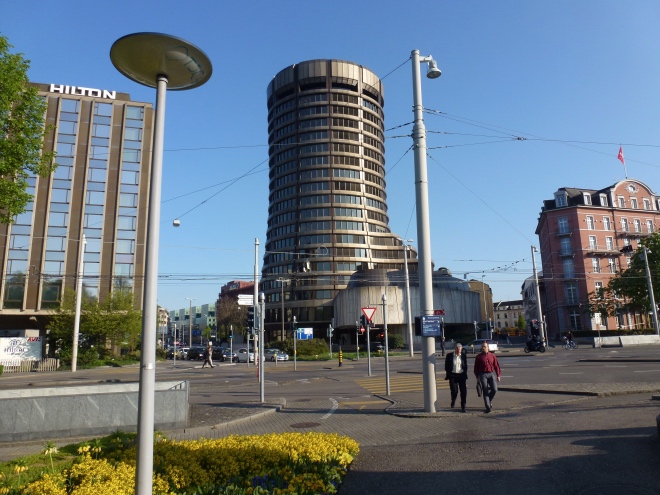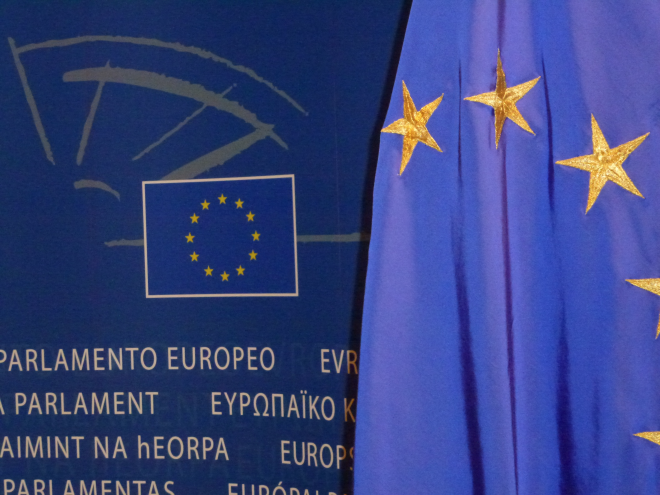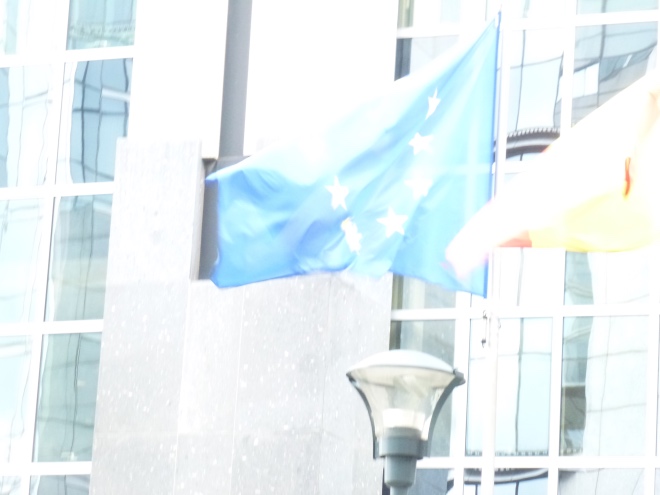Option 1 – keep calm and carry on
Until Article 50 of the Treaty on the European Union is triggered by the UK requesting to leave the European Union, the status quo remains. The article entitles a Member State to withdraw from the Union “in accordance with its own constitutional requirements”.
 Already a row is emerging about when the UK will formally apply to leaving the EU. Mr Cameron reneged on his promise to trigger the article immediately following a “Leave” vote, opting to leave office instead; October is now the earliest possible date, but with strong signals of an early election it may be later still.
At the time of writing, as the enormity of the situation is starting to dawn on all parties, the consensus is that it is better to wait and do this right, rather than enter a forced negotiation.
For now there is no legal change to the status quo. Solvency II, along with all the legal and regulatory UK-EU frameworks remains in force and may be so for quite some time, enough to enter into the short to mid-term business planning horizons even.
If your firm is subject to quarterly reporting, whether it is based in the UK or the EU, 25 August 2016 is your next deadline (6 October 2016 for groups).
Already a row is emerging about when the UK will formally apply to leaving the EU. Mr Cameron reneged on his promise to trigger the article immediately following a “Leave” vote, opting to leave office instead; October is now the earliest possible date, but with strong signals of an early election it may be later still.
At the time of writing, as the enormity of the situation is starting to dawn on all parties, the consensus is that it is better to wait and do this right, rather than enter a forced negotiation.
For now there is no legal change to the status quo. Solvency II, along with all the legal and regulatory UK-EU frameworks remains in force and may be so for quite some time, enough to enter into the short to mid-term business planning horizons even.
If your firm is subject to quarterly reporting, whether it is based in the UK or the EU, 25 August 2016 is your next deadline (6 October 2016 for groups).
Option 2 – continue membership of the EEA
This is the so-called “Norway option”, which is also applicable to Iceland and Liechtenstein. Under this option the UK continues its membership of the European Economic Area (EEA) and the ‘four freedoms’ (movement of capital, goods, persons and services) remain in force. The UK retains the coveted full access to the single market and there is effectively no legal impact on Solvency II. It continues to apply in UK law. However, the UK would lose its ability to influence regulation directly as it will no longer be represented in the Council and the Parliament and therefore no longer be a part of the co-decision process in Brussels. It will have to rely on forming alliances with existing Member States. The UK will also lose a lot of power at EIOPA, as it will no longer be a voting member of the Board of Supervisors. It will retain an observer status at meetings, however, and UK firms will also be able to contribute to EIOPA consultations.
Currently the most consequential impacts on firms in respect of Solvency II are likely to be taken at EIOPA level, as it is responsible for drafting the Implementing Technical Standards (ITS), which must then be adopted by the Commission.
Since the entry into force of Solvency II at the start of the year, EIOPA conducted 10 consultations including amendments to the ITS on the reporting templates and a consultation on the UFR calculation – a vital component of the LTG measures.
The UK will also lose a lot of power at EIOPA, as it will no longer be a voting member of the Board of Supervisors. It will retain an observer status at meetings, however, and UK firms will also be able to contribute to EIOPA consultations.
Currently the most consequential impacts on firms in respect of Solvency II are likely to be taken at EIOPA level, as it is responsible for drafting the Implementing Technical Standards (ITS), which must then be adopted by the Commission.
Since the entry into force of Solvency II at the start of the year, EIOPA conducted 10 consultations including amendments to the ITS on the reporting templates and a consultation on the UFR calculation – a vital component of the LTG measures.
Option 3 – leave the EU and EEA to join EFTA
This is the so-called “Swiss option”, applicable to Switzerland only. The UK leaves both the EU and EEA and joins the European Free Trade Association (EFTA) by negotiating a series of bilateral agreements with the EU to gain limited access to the single market. The Swiss agreement (which may be framed in different terms for the UK) encompasses trade with the EU but Switzerland is not automatically subject to EU legislation. It does, however, have to comply with some rules to gain access to the single market and as part of the agreement had to accept freedom of movement. This option does not have a mechanism for automatically updating the bilateral agreements, which means that rules and regulations have to be constantly updated to match EU rules. If the UK were to take up this option it would obtain ‘third country’ status and will have to have an equivalent regime in place. In terms of Solvency II this would mean that the Directive and regulations would continue to apply to UK insurers and the UK will have to apply for equivalence (spare a thought for Peter Skinner and Sharon Bowels, the British MEPs who worked so closely on third country equivalence).
A further disadvantage of the EFTA option is that the UK will have even less influence on rule making as it allows for less access to European institutional processes.
If the UK were to take up this option it would obtain ‘third country’ status and will have to have an equivalent regime in place. In terms of Solvency II this would mean that the Directive and regulations would continue to apply to UK insurers and the UK will have to apply for equivalence (spare a thought for Peter Skinner and Sharon Bowels, the British MEPs who worked so closely on third country equivalence).
A further disadvantage of the EFTA option is that the UK will have even less influence on rule making as it allows for less access to European institutional processes.
Option 4 – total exit from the EU
The UK makes a clean break from the EU and EEA and looks to negotiate bilateral agreements under a ‘third country’ status. In the absence of specific agreements, relations default to international treaties such as the WTO, the Basel framework for banking and IAIS Insurance Core Principles. Solvency II equivalence would have to be negotiated on the basis of the current three articles: Article 172 – reinsurance, Article 227 – Group solvency calculation and Article 260 – Group supervision. Here the waters start to become murky. The discussions on Solvency II equivalence will enter the wider arena of barter with other financial services and other agreements that will be negotiated between the UK and the EU.Customs Union
Under the total exist scenario there is also the so-called “Turkish option”, in which the UK would seek to enter into a customs union, similar to the one agreed with Turkey in 1995. Such a union does not cover services, however, specifically financial services. Therefore, there would be no clarity as to the potential impact on the financial services regulation currently in force in the UK, including Solvency II.The future of Solvency II
The future of Solvency II should be considered in both the European and UK contexts. In the European context, it is unlikely much will change. According to the EIOPA Register of Insurance Undertakings (effectively listing most firms under the scope of Solvency II) only 11% of undertakings are based in the UK. Barring any other “[Insert country name here]-exits”, the majority of the market should continue as is. For UK based firms, much will depend on what option is taken up in the negotiations. Given the growing influence and adoption of Solvency II across the globe and the fact that UK insures are very well prepared in their implementation of Solvency II, it is likely that the industry will press the government to keep most of the de-facto status quo, albeit reducing some of the more burdensome and disliked elements of the regime. For example, expect Pillar III reporting to be reduced significantly, and look-through to all but disappear. A new conservative government under Donald Boris Johnson is likely to be even more pro-trade and austerity-driven, so expect also that some of the less liked capital charges will be reduced. However should there be an early election (not unlikely) resulting in a Labour government or some form of a Labour-Conservative Remain government (would you rule that out in this day and age?) then these reductions would be limited if enforced at all. In either case the Bank of England and PRA will be a strong counter-balance to any attempts to water down the rules. The UK is regularly accused of “gold plating” financial services regulation, including Solvency II: think for example of the introduction of the Early Warning Indicators by the PRA shortly after its formation. Much of this approach stems from a desire to lead the industry standard, given the significant proportion Financial Services play in the economy.The past is no indicator of the future
Two further factors should be looked at when considering the outcome of any new EU-UK settlement, which will also have implications for Solvency II. The first is that most of the options listed above are viewed by the EU as steps in the journey towards full European integration. In fact membership in the EU (for non Eurozone countries) is defined precisely as such. The options listed above were negotiated with this view in mind. Given that the UK will be negotiating with a view to leave, the EU may not be as accommodating in its negotiations. The second factor is that all of these arrangements (EEA and EFTA) are with relatively small economies. In contrast, the UK is the word’s 9th largest economy based on GDP (Turkey is 15th, Switzerland 38th, according to IMF figures). The UK also enjoys the 4th largest representation in EU institutions such as the Parliament and the Council. The size of the UK economy is likely to have significant impact on the outcome of the negotiations.
What happens next is difficult to assess. Negotiations are conducted in one’s own interest, with the aim of reaching a mutually beneficial arrangement that will guarantee the effectiveness and longevity of the agreement.
Most of the parties at the negotiating table will be fully aware of the mutual benefits and dependencies between the UK and the EU and most likely have a favourable view of cooperation. After all, how well can EU financial services do without the City of London? How well can the National Health Service in the UK do without the thousands of EU migrant workers, from cleaners to doctors?
The second factor is that all of these arrangements (EEA and EFTA) are with relatively small economies. In contrast, the UK is the word’s 9th largest economy based on GDP (Turkey is 15th, Switzerland 38th, according to IMF figures). The UK also enjoys the 4th largest representation in EU institutions such as the Parliament and the Council. The size of the UK economy is likely to have significant impact on the outcome of the negotiations.
What happens next is difficult to assess. Negotiations are conducted in one’s own interest, with the aim of reaching a mutually beneficial arrangement that will guarantee the effectiveness and longevity of the agreement.
Most of the parties at the negotiating table will be fully aware of the mutual benefits and dependencies between the UK and the EU and most likely have a favourable view of cooperation. After all, how well can EU financial services do without the City of London? How well can the National Health Service in the UK do without the thousands of EU migrant workers, from cleaners to doctors?
The path not taken
You may well be wondering why we are doing all of this or why it happened in the first place? To many, Brexit will seem like an unfortunate accident. In 1975 the UK voted to remain in what were then called the “European Communities” by a majority of 67.23%. In Thursday’s referendum the difference between remain and leave was 3.8%. The Brexit debate in the UK was ugly and misinformed, and was essentially distilled to two factors: regaining ‘control’ from Europe and, most prominently, immigration. A person less familiar with the UK could wrongly deduce that this is an island state, filled with small-minded inward looking bigots with an inherent dislike for foreigners. That is wrong! True, anti-European sentiment has always been an on-going preoccupation in the UK (especially of the tabloid and right wing press) but so have the weather and the dismal performance of the England football team at international tournaments. This discourse has seldom played a decisive factor in politics to the extent that it has now. London and many other parts of the country are as diverse and cosmopolitan as you are likely to find anywhere in the world. What is it that made half of the British people turn their backs on all the benefits of EU membership just for the sake of curbing immigration? The answer is economics. Since the financial crisis and the orchestrated transfer of private debt (largely incurred by the banking industry) to the public accounts there has been an on-going erosion of standards of living for large parts of the population in the UK and Europe. The policy responses of austerity and quantitative easing have increased the inequality gap. All of the rhetoric of improving national GDP levels and productivity cannot paste over the cracks and fractures that are forming across our societies. The financial indexes might look good and certain areas might be prosperous, but in the heartland people are suffering. You see it in the rise of the anti-European movements across Europe; you see it in the rise of anti-establishment figures in US politics. Being all things to all people, Europe became the scapegoat in the referendum. It is condemned as too opaque, neoliberal and close to big business and in the same breath hailed as a champion of human rights, workers’ rights and regional development. The real enemy is austerity. Cameron’s austerity policies have cost him his premiership. It will cost us – all of Europe’s citizens – a lot more. There is much to be learned from the Brexit debacle and it should serve as a warning to Europe’s leaders to consider carefully the consequences of their policy actions. No amount of European solidarity and singing ‘Ode to Joy’ will drown out the inequality you are creating. We tried austerity and obsessive market-based solutions: let’s admit it, they failed. And in so doing opened the door to an ugly spectre, which has reared its head in the results of the Brexit vote. Policy makers and business should consider carefully the consequences of this path. More importantly they should open their eyes and see what is happening around them and start working on policies that deliver for all of Europe’s citizens. — Reference material used in preparation of this article
Brexit Essentials, Slaughter and May, (accessed June 2016)
The ins and outs of Brexit, Ashursts, (accessed June 2016)
To subscribe to the Solvency II Wire mailing list for free click here.
[adsanity_group num_ads=1 num_columns=1 group_ids=233 /]]]>
Reference material used in preparation of this article
Brexit Essentials, Slaughter and May, (accessed June 2016)
The ins and outs of Brexit, Ashursts, (accessed June 2016)
To subscribe to the Solvency II Wire mailing list for free click here.
[adsanity_group num_ads=1 num_columns=1 group_ids=233 /]]]>





